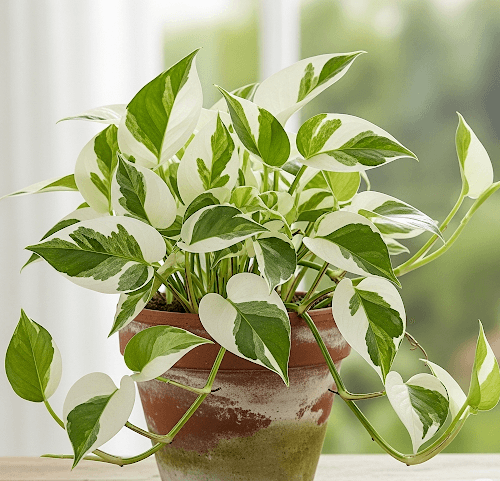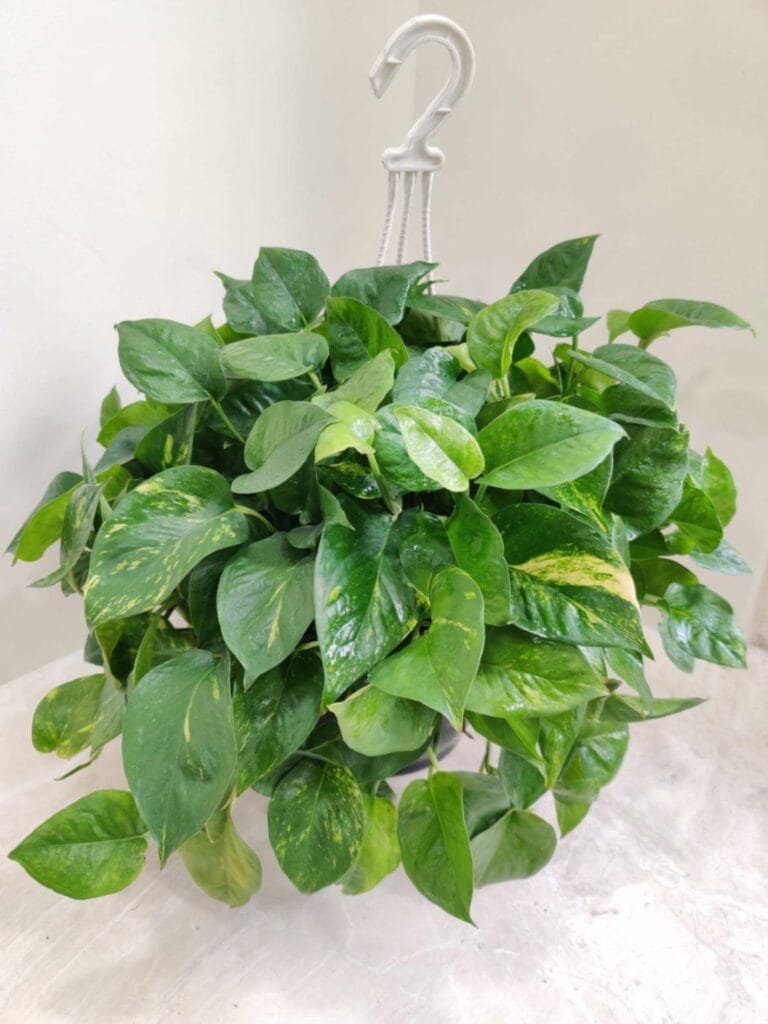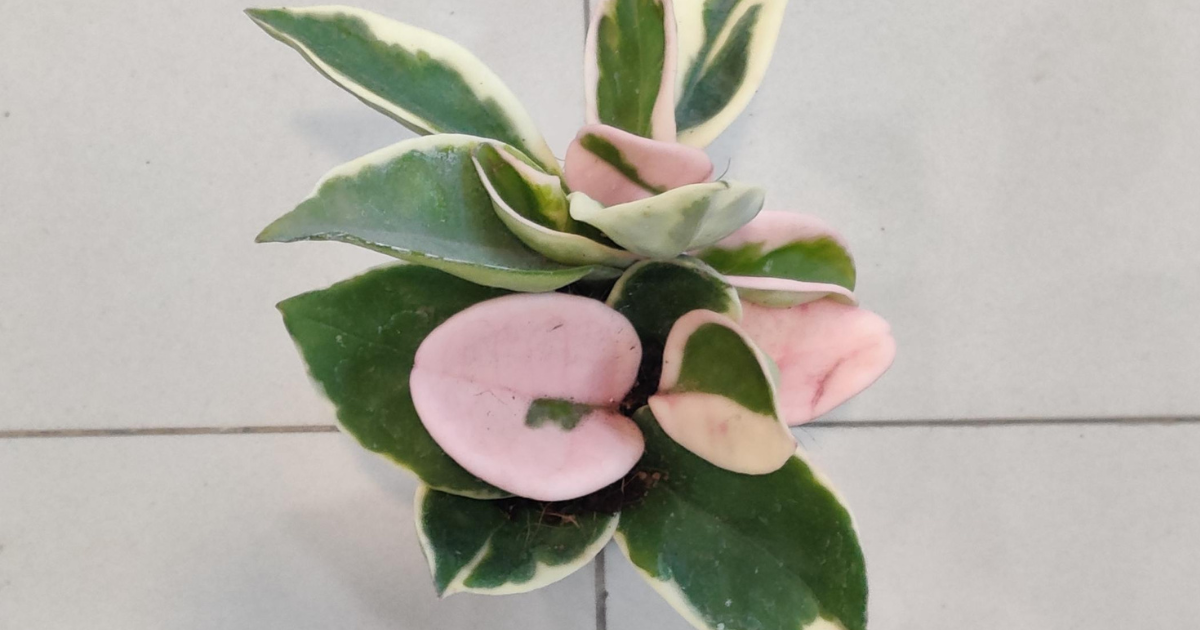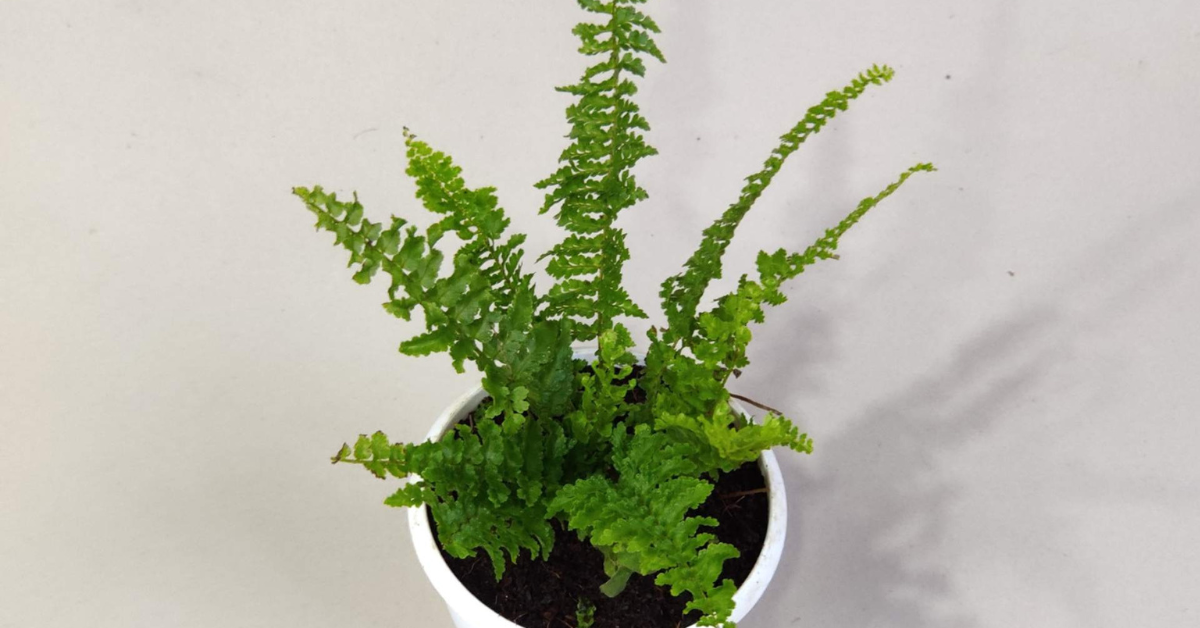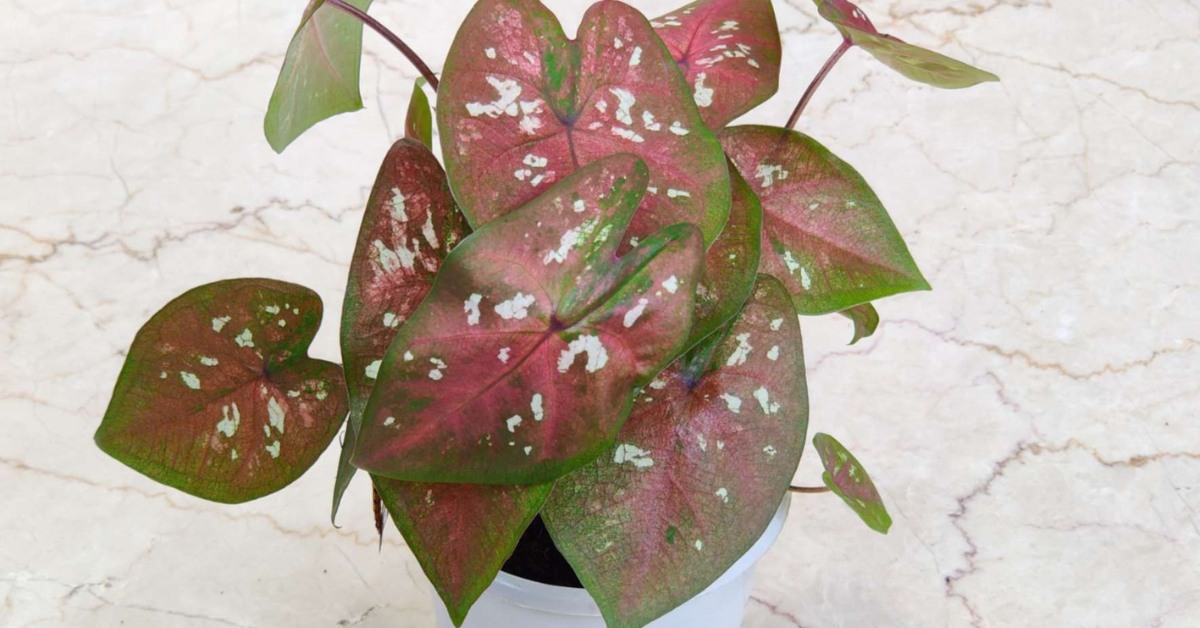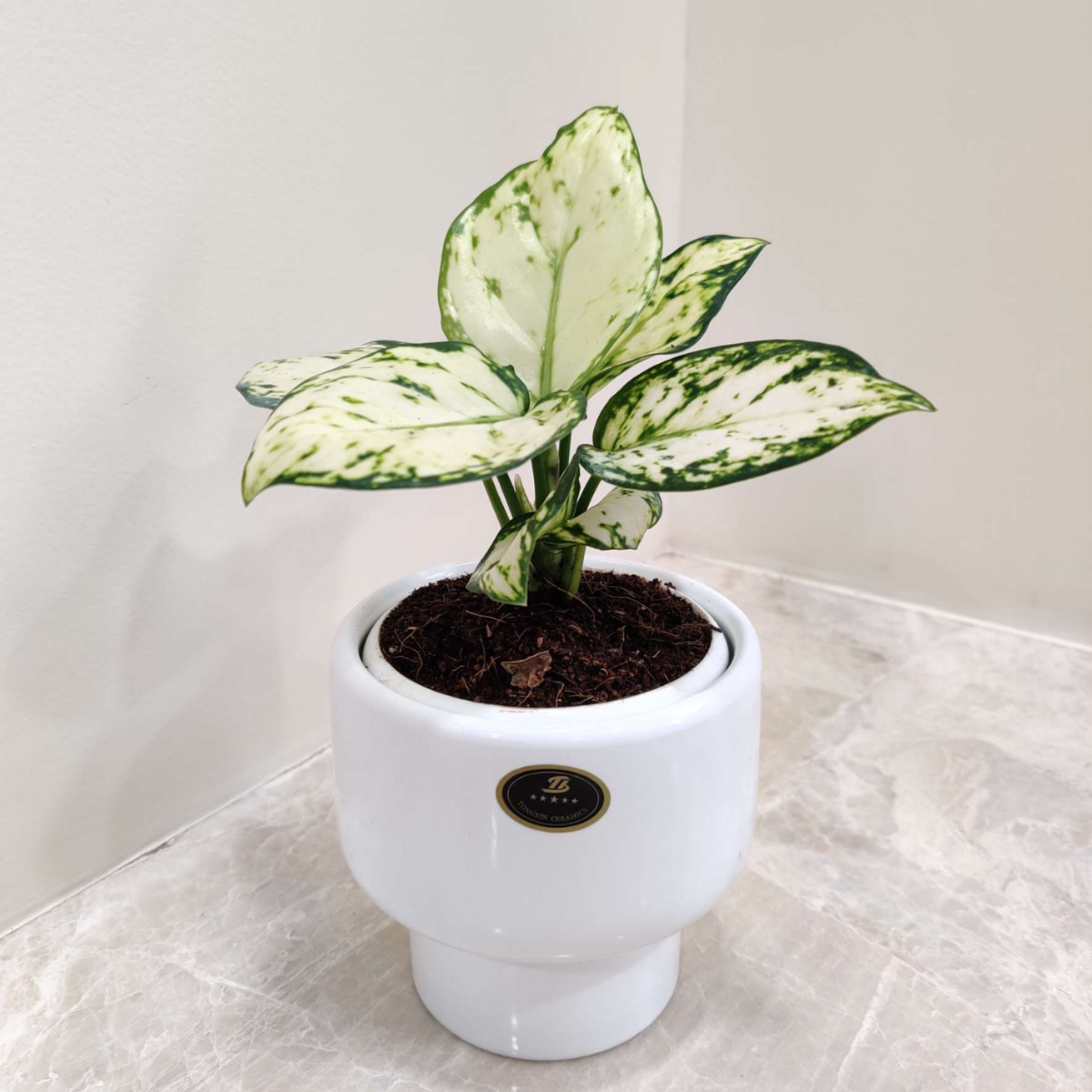Are you dreaming of a houseplant that combines elegance, simplicity, and air-purifying power — all with a modern flair? Look no further than the N’Joy Pothos (Epipremnum aureum ‘N’Joy’), a radiant indoor vine that’s become a favorite in homes and offices worldwide. With its cream-and-green variegated leaves, compact growth, and low-maintenance needs, the N’Joy Pothos is more than just a pretty face — it’s a rewarding plant for beginners and collectors alike.
In this complete care guide, we’ll explore everything you need to know about growing and maintaining this exquisite pothos variety. We’ll cover its origins, ideal growing conditions, propagation techniques, common problems, creative styling ideas, and more
Key Characteristics
Botanical Name: Epipremnum aureum ‘n’joy’
Common Name: N’joy pothos
Family: Araceae
Plant Type: Perennial, vine
Mature Size: 10 ft. long
Sun Exposure: Partial
Soil Type: Moist but well-drained
Native Area: Asia

What Makes N’Joy Pothos Special?
Discovered by the University of Florida in 2002, N’Joy Pothos is a cultivar of the Marble Queen Pothos. It features smaller, thinner leaves with more pronounced variegation, making it a favorite among plant enthusiasts. Unlike other pothos varieties, the N’Joy is relatively slow-growing, but its unique foliage makes the wait worthwhile.
N’Joy Pothos is also perfect for beginner plant parents due to its hardy nature. However, pet owners should take note—like other pothos plants, it is toxic to pets if ingested.
Epipremnum aureum ‘N’Joy,’ a stunning member of the beloved Pothos family, showcases the perfect blend of beauty and functionality that indoor plants bring. Renowned for its striking variegated leaves, compact size, and exceptional adaptability, this variety has become a treasured favorite among plant enthusiasts and a delightful addition to any indoor space.
Pothos N’ Joy offers exceptional air-purifying benefits, making it a natural choice for healthier indoor spaces. It effectively filters harmful pollutants such as formaldehyde and xylene, contributing to cleaner and fresher air. Backed by scientific research, this plant enhances overall air quality, creating a more pleasant and toxin-free environment.

To care for a N’Joy Pothos, provide bright, indirect light, water when the top inch of soil feels dry, use a well-draining potting mix, maintain moderate room temperature, and consider increasing humidity with misting or a pebble tray; avoid direct sunlight and overwatering, which can harm the plant; regular pruning can encourage fuller growth and propagation is easy from stem cuttings.
1. Light Requirements: Bright Indirect Light is Key
One of the most crucial care tips for N’Joy Pothos is understanding its lighting needs. The white variegation on the leaves contains little to no chlorophyll, meaning the plant needs more light than solid green varieties to thrive.
Best Light Conditions:
- Bright, indirect light for 6–8 hours per day
- East or west-facing windows are ideal
- South-facing windows work well with a sheer curtain
Avoid:
Low light (results in loss of variegation and leggy growth)
Direct sunlight (causes leaf scorch and browning)
2. Soil: Light, Airy, and Well-Draining
A common mistake with pothos care is using overly dense soil. N’Joy Pothos thrives in an airy, chunky soil mix that mimics the tropical forest floor where its ancestors grew.
DIY Potting Mix:
- 1 part indoor potting soil
- 1 part perlite (for drainage)
- 1 part orchid bark or coconut coir (for texture and aeration)
Pro Tip:
Avoid garden soil — it’s too dense and risks root rot.
3. Feeding Your N’Joy: Fertilizer for Foliage Growth
Although low-maintenance, this beauty appreciates a little boost during its growing season.
When & How to Fertilize:
- Frequency: Once a month from spring to early fall
- Type: Balanced liquid houseplant fertilizer (10-10-10 or 20-20-20)
- Winter: Stop fertilizing — growth slows naturally
Slow-release fertilizer is also an option during repotting.
Feed Your Plants Right
Explore our premium soil mixes and balanced fertilizers designed for thriving pothos and houseplants.
4. Watering Your N’Joy Pothos: The Balance Between Moist and Dry
N’Joy prefers to dry out slightly between waterings. Overwatering is a leading cause of yellowing leaves and mushy stems.
General Rule:
- Water when the top 2–3 inches of soil are dry to the touch.
- Ensure excess water drains completely — never leave the pot sitting in water.
Warning Signs:
- Yellow leaves: Overwatering or underwatering
- Brown edges: Low humidity or direct sun
- Wilting: Dry roots or pests
5. Temperature & Humidity Needs
Like most tropical plants, N’Joy Pothos enjoys warm, stable conditions and moderate to high humidity.
Ideal Range:
- Temperature: 65–75°F (18–24°C)
- Humidity: 50–70%
Cold Weather Tips:
- Keep away from AC vents, open windows, and sudden temperature swings.
- Avoid temps below 50°F (10°C) — they can cause permanent damage.
Humidity Boost Ideas:
Place on a pebble tray
Group plants together
Use a humidifier
Mist with filtered water
Pruning & Styling: Keep It Bushy and Beautiful
Pruning N’Joy isn’t mandatory, but it’s the best way to:
- Shape your plant
- Encourage bushy growth
- Control length
- Remove damaged leaves
- Harvest cuttings for propagation
How to Prune:
- Use clean scissors or shears
- Cut just above a node
- Replant cuttings into the same pot for a fuller plant
Creative Styling Tips:
- Let vines trail down from shelves
- Use macramé hangers for a boho touch
- Train on a moss pole for bigger, upright growth
How to Propagate N’Joy Pothos
Propagation is a joy (pun intended!) and an affordable way to expand your indoor jungle.
Water Propagation (Easiest):
- Cut 4–6 inch sections with 3–4 nodes
- Remove bottom leaves
- Place in a clear glass of filtered water
- Keep in bright indirect light
- Roots should appear in 1–2 weeks
- Transfer to soil when roots are 1–2 inches
Soil Propagation:
- Use a moist, well-draining mix
- Insert cuttings halfway into the soil
- Keep humidity high until rooted
When to Repot N’Joy Pothos
N’Joy grows slowly, so repotting isn’t frequent — every 1–2 years is usually enough.
Signs It’s Time:
- Roots poking through drainage holes
- Soil dries out too fast
- Slowed or stunted growth
How to Repot:
- Repot in spring or early summer
- Use a pot one size larger
- Gently loosen roots and replace with fresh soil
- Water thoroughly after repotting
Style Your N’Joy in the Perfect Pot
Choose from handcrafted ceramic, modern planters, and hanging baskets to elevate your plant decor.
Common Problems and Fixes
| Problem | Cause | Fix |
|---|---|---|
| Yellow Leaves | Overwatering, low light | Let soil dry, increase light |
| Brown Tips/Edges | Low humidity, underwatering | Boost humidity, water when topsoil is dry |
| Loss of Variegation | Too little light | Move to a brighter location (no direct sun) |
| Slow Growth | Normal or due to low light | Provide bright, indirect light and fertilize monthly |
| Root Rot | Poor drainage, overwatering | Repot, trim dead roots, switch to airy soil |
N’Joy Pothos vs. Other Pothos Varieties
- N’Joy vs. Pearls and Jade: While both have white variegation, Pearls and Jade feature small green flecks in the white patches, unlike the stark contrast of N’Joy.
- N’Joy vs. Glacier: N’Joy leaves are larger and more pointed, while Glacier leaves are smaller, more rounded, and predominantly white.
Why Choose N’Joy Money Plant for Your Home?
N’Joy Pothos is not just a plant; it’s a statement piece that elevates your indoor environment. Its low-maintenance nature makes it suitable for beginners, while its aesthetic appeal ensures it’s a favorite for seasoned plant enthusiasts. Plus, with proper care, this slow-growing beauty can last for years, becoming a cherished part of your home.
Whether you’re creating a lush indoor garden or simply want a decorative plant for your coffee table, N’Joy Pothos is a reliable and gorgeous choice.
Styling Ideas for Interior Decor
Want to flaunt your N’Joy Pothos in style?
Try These:
- Modern Minimalism: White ceramic pots on wooden plant stands
- Boho Jungle: Mix with trailing vines and woven hangers
- Desk Charm: Small N’Joy in a colorful pot for your office
- Bathroom Oasis: N’Joy thrives in naturally humid environments!
Looking to invite abundance and harmony into your living space? According to Vastu Shastra, placing your Money Plant in the right direction can enhance both aesthetics and positive energy.
Learn where and how to place your N’Joy Pothos or other money plant varieties by visiting our full article on Money Plant Vastu Tips: Do’s & Don’ts.
Final Thoughts
The N’Joy Pothos proves that you don’t need a green thumb to enjoy a plant that feels exotic, elegant, and easygoing. With just a little light, love, and the right soil mix, this graceful trailing vine can transform your home into a calming green oasis.
Whether you’re a seasoned houseplant collector or just beginning your indoor garden journey, the N’Joy offers a perfect blend of beauty and simplicity. Its lush, artistic foliage and forgiving nature make it the ultimate statement piece for any plant lover’s space.
Want to make your plant look fuller and more vibrant? Read our complete guide on How to Make Your Money Plant Full and Bushy — it’s packed with actionable tips that apply to N’Joy Pothos and other trailing houseplants.
Ready to bring the N’Joy Pothos into your life?
FAQs:
1. How much light does it need?
N’joy pothos prefers bright, indirect sunlight. Direct sunlight can burn the leaves.
2. How often should I water it?
Water the plant when the top inch of soil is dry. Avoid overwatering, which can cause root rot.
3. What temperature does it prefer?
N’joy pothos prefers temperatures between 65–75°F (18–24°C). It can tolerate temperatures as low as 50°F (10°C).
4. How do I increase humidity?
Mist the plant regularly or place a tray of pebbles filled with water under the pot.
5. How often should I fertilize it?
Fertilize the plant once a month during the growing season (spring and summer) with a balanced liquid fertilizer.
6. How do I prune it?
Prune the plant to control its growth and remove any dead or damaged leaves.
7. Is it toxic to pets or humans?
Yes, the N’joy pothos is toxic to cats and dogs, and can be mildly toxic to humans.
8. Is it an effective air purifier?
Yes, the N’joy pothos is an effective air purifier that removes many common household toxins.
9. Can I trim it to make a tabletop plant?
Yes, you can trim the N’joy pothos to make a compact tabletop plant.

